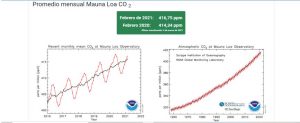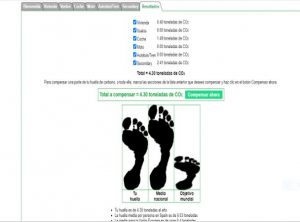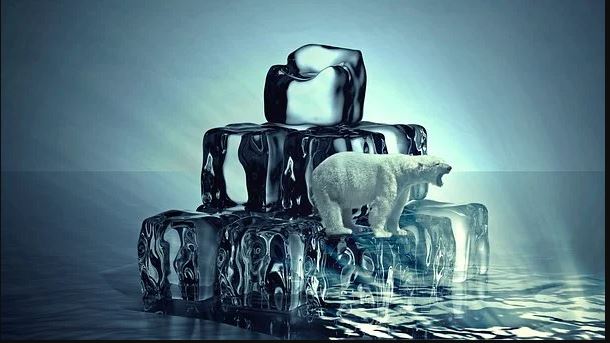Climate Detectives Projects 2020-2021
Project title: CO2 EMISSIONS. PROBLEMS AND SOLUTIONS
Team: ” EQUIPO ENFRIAMIENTO GLOBAL 4º ESO ”
IES DOCTOR SANCHO DE MATIENZO. VILLASANA. VILLASANA DE MENA (BURGOS) Spain 12 6Student’s age: 14-15 years old
• Target: We have prepared a research project regarding the impact of CO2 in our local environment, and at global level.

• Project summary. The research project has been carried out following three investigation lines:
First investigation line. Mauna Loa observatory (Hawai). We have selected CO2 data emissions of this observatory at global level and at local level, from Valladolid, that is close to our town Villasana de Mena. We have got the data from the webpage https://gml.noaa.gov/obop/mlo/.
Second investigation line. We have calculated our carbon footprint, considering the CO2 emissions of our life during a year. The application used has been https://www.carbonfootprint.com/
Third investigation line. We have meassured CO2 at our class with a CO2 tester in two different situations: windows opened and windows closed.

Main results and conclusions:
• First investigation line. Mauna Loa observatory. The CO2 level is increasing every year, both globally and locally, and that means a really concerning issue for our Earth planet.
It is shoen that the CO2 concentration global data, in ppm, are increasing every year.
The closest CO2 emissions observatory to our town is located in Valladolid.
Valladolid observatory has monthly CO2 concentration data, in ppm, and they are increasing over the years.
• Second investigation line. Carbon footprint. As we are living in a developed country, we have an individual carbon footprint above the world average. These data have been considered from an CO2 emissions average in our daily life from activities such as means of transport, heating, electricity, travels and leisure, purchases of food, clothing, footwear, mobile phones, computers, etc.
On the other hand our footprint is lower than the national average.
• Third investigation line. CO2 tester. When the windows were closed there was less oxygenation, and the concentration of CO2 raised faster. With concentration above 1000 ppm, the tester whistled.
It was also observed that if the class was more participatory, with more people speaking, the CO2 concentration raised even faster.
This last investigation line is quite helpful in order to minimize risks facing COVID-19, realizing how relevant is to ventilate the class and take turns speaking.

• Corrective actions to take to make a difference and mitigate the CO2 problem:
Consume local products to reduce transport emissions.
Recycle paper and other wastes to minimize burnings that emit CO2.
Use cloth masks outside, to reduce burnings of mask wastes.
Share transport vehicles when possible, and use bicicles and public transport.
We have also study the hydrogen energy as an alternative to the fossil fuels, because is a green energy without CO2 impact.
Goverments should subsidize hybrid and electric cars.
Reduce the use of heating at home and at school, use warm clothes instead.
Regarding the current COVID-19 health crisis, whenever possible we shall keep the windows opened and shall speak in turns.
https://view.genial.ly/60acc0636152820dd44f3735/presentation-oficial
Projects are created by the teams and they take the full responsibility of the shared data.
← All projects





